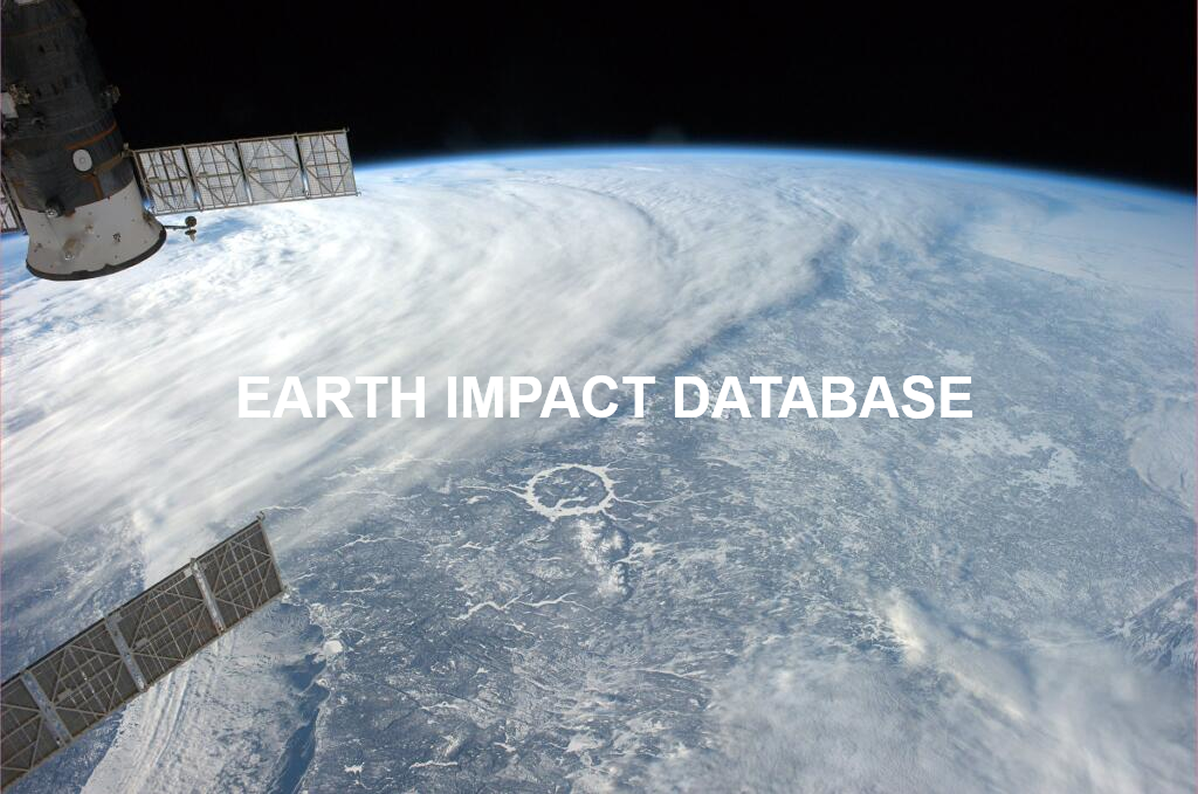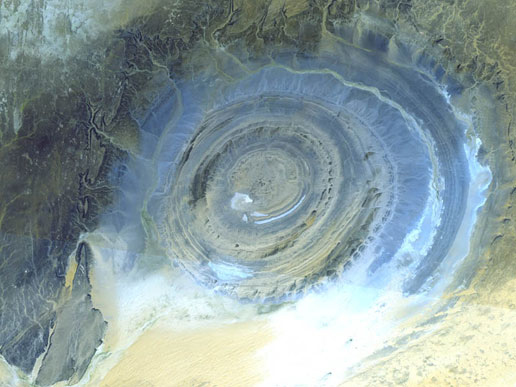Frequently Asked Questions
Does the Earth Impact Database include Unconfirmed Structures?
Is there a large impact structure on the SE margin of Hudson Bay, Canada?
How should the Earth Impact Database be referenced in publications?
Why is Crater Lake, Oregon not in the impact crater listing?
Why is Meteor crater not listed in the database?
What are the most recent additions to the database?
There appears to be a large impact structure in Mauritania. What is it?
Answers
Does the Earth Impact Database include Unconfirmed Structures?
Prospective new impact structures are only added to the listing if convincing details of shock metamorphic features, associated shatter cones or other similarly unambiguous evidence of formation by impact is presented, preferably in a published format. By excluding other prospective impact structures, we hope to maintain the integrity of the listing. As such, many promising but hitherto unproven impact structures are not included in the primary list. We are currently working on including a separate unconfirmed list.
Is there a large impact structure on the SE margin of Hudson Bay, Canada?
.jpg)
Image from Global Land Cover Facility
At first glance it looks like an impact structure, but it is not.
Some references of interest include:
Rondot, Jehan (1994). Recognition of eroded astroblemes. Earth-Science Reviews 35, 4, p.331-365.
Wilson, J. Tuzo (1968) Comparison of the Hudson Bay arc with some other features. In: Science, History and Hudson Bay, v. 2. Beals, C. S. (editor), p.1015-1033.
How should the Earth Impact Database be referenced in publications?
We recommend the following format for referencing information gathered in the database, a style recommended in Harnack and Kleppinger, 1997 (Online: A reference guide to using internet sources, Published by St Martins Press, N.Y, pp.162. ISBN: 0-312-15023-7):
Earth Impact Database, 2011. http://www.unb.ca/passc/ImpactDatabase/> (Accessed: day/month/year)
Please write the month, and do not use numerals for the access date, as different countries quote numerically represented dates in different orders.
Within your text, it should be referenced as (Earth Impact Database, 2011) or, Earth Impact Database (2011), using the title like an author.
Why is Crater Lake, Oregon not in the impact crater listing?
Crater Lake, Oregon was not formed by an impact event, even though it has the superficial appearance of some of the fresher (less eroded) impact structures. It was formed instead by the explosive eruption of Mount Mazama, a large andesitic volcano that stood at this location prior to the climactic eruption that destroyed it. The explosion blew the top off the mountain, similar to that which occurred in 1980 at Mount St Helens in neighbouring Washington State. Subsidence of the volcano, called caldera collapse, followed the eruption of Mount Mazama, forming the depression now filled with water, known as Crater Lake. Subsequent minor volcanism from a small fissure on the floor of the lake has constructed the small conical Wizard Island. This is not a central uplift.
Why is Meteor crater not listed in the database?
It is! It is more correctly named Barringer Crater, after the former landowner and developer who tried to drill for meteoritic material in the crater.
What are the most recent additions to the database?
For the most recent updates to the Earth Impact Database see the PASSC Website Updates Section.
There appears to be a large impact structure in Mauritania. What is it?
The large structure with a "bulls-eye" appearance is known as the Richat Structure. The structure was originally believed to be an impact structure but is now believed to be a symmetrical uplift which has been exposed as a result of erosion in the area.

